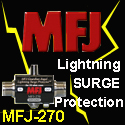D-STAR illegal in France
Discussion in 'Amateur Radio News' started by G4TUT/SK2022, Jun 29, 2010.
- Thread Status:
- Not open for further replies.
Page 12 of 15
Page 12 of 15
- Thread Status:
- Not open for further replies.










